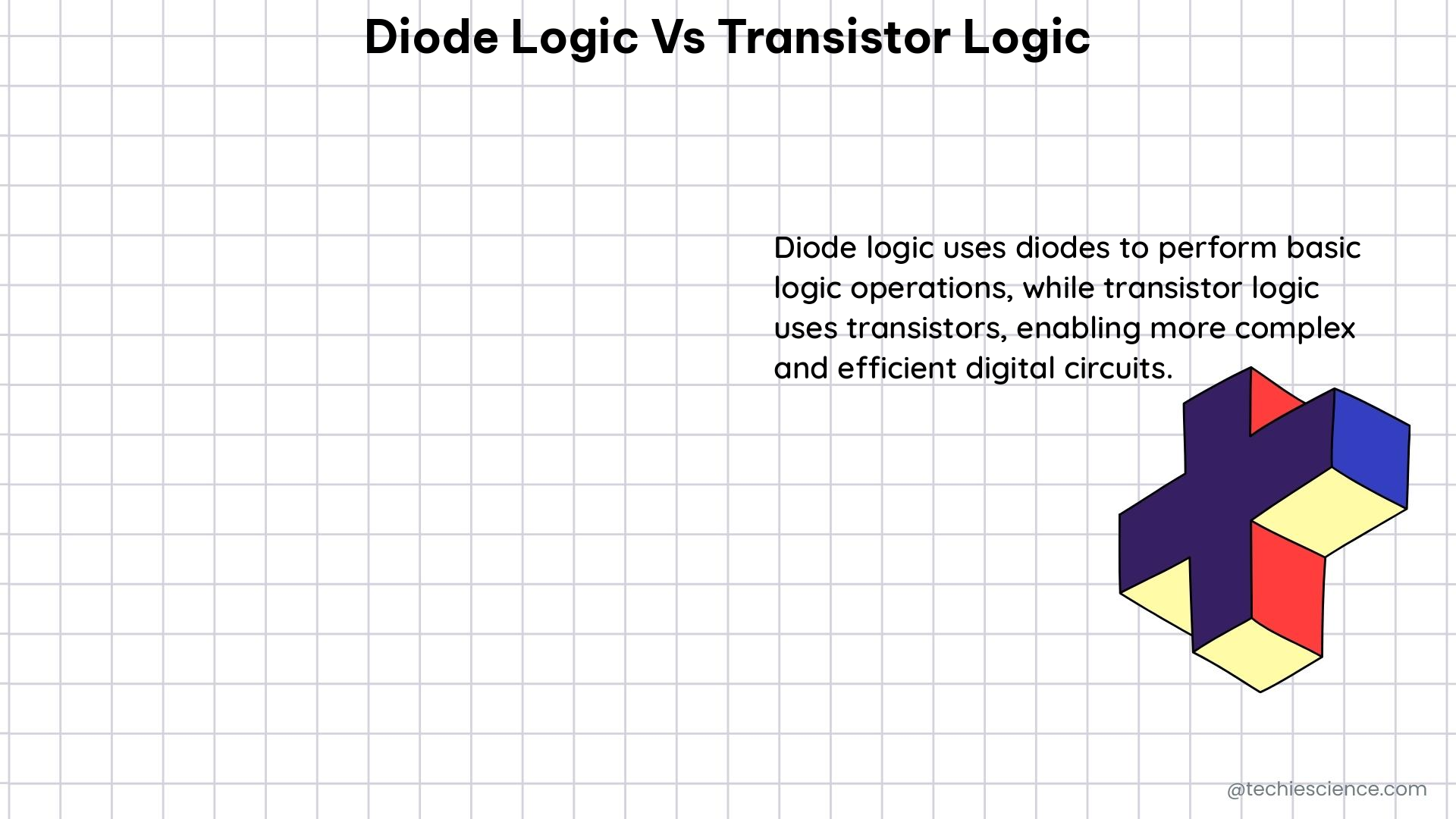Diode Logic (DL) and Transistor Logic (TL) are two fundamental concepts in digital electronics, each with its unique characteristics, advantages, and disadvantages. This comprehensive guide will delve into the technical specifications, theoretical explanations, and hands-on details of these two logic systems, providing a valuable resource for electronics students and enthusiasts.
Diode Logic (DL)
Diode Logic (DL) is the simplest form of digital logic, using diodes as switching elements. The primary advantage of DL is its simplicity and low cost, as diodes are generally cheaper than transistors. However, DL has some limitations, such as high power consumption, limited fan-out, and the inability to implement inverting gates.
Voltage Drop and Power Consumption
The voltage drop across a forward-biased diode is typically around 0.7V. This voltage drop results in a significant power loss, making DL less efficient than TL. Additionally, DL requires resistors in series with the diodes, further increasing power consumption.
Practical Example: Diode Logic OR Gate
A practical example of DL is the OR gate, which can be implemented using two input diodes and a resistor, as shown in Figure 1. When either input A or B is high, the corresponding diode conducts, pulling the output Y high. When both inputs are low, the output Y is pulled low by the resistor.

Transistor Logic (TL)

Transistor Logic (TL) uses transistors as switching elements, offering several advantages over DL. TL has lower power consumption, higher fan-out, and the ability to implement inverting gates. However, TL is more complex and expensive than DL due to the use of transistors.
Resistor-Transistor Logic (RTL) and Transistor-Transistor Logic (TTL)
TL can be implemented in two primary configurations: Resistor-Transistor Logic (RTL) and Transistor-Transistor Logic (TTL). RTL uses a resistor to pull up the output when the transistor is off, while TTL uses a transistor for the same purpose, resulting in lower power consumption and higher speed in TTL.
Practical Example: Transistor Logic NAND Gate
A practical example of TL is the NAND gate, which can be implemented using two transistors and four resistors, as shown in Figure 2. When either input A or B is low, the corresponding transistor conducts, pulling the output Y low. When both inputs are high, the transistors are off, and the output Y is pulled high by the resistors.

Technical Specifications Comparison
The following table compares the technical specifications of DL and TL:
| Specification | DL | TL (RTL) | TL (TTL) |
|---|---|---|---|
| Switching Element | Diodes | Transistors | Transistors |
| Power Consumption | High | Medium | Low |
| Fan-out | Limited | Medium | High |
| Inverting Gates | No | No | Yes |
| Complexity | Low | Medium | High |
| Cost | Low | Medium | High |
Hands-on Details
To better understand DL and TL, consider the following hands-on details:
-
Power Consumption: DL has higher power consumption due to the voltage drop across the diodes. TL has lower power consumption, especially in TTL configurations. For example, a typical DL OR gate can consume around 10-20 mW of power, while a TTL NAND gate can consume as little as 2-5 mW.
-
Scale of Integration: TL has a higher scale of integration than DL due to its lower power consumption and the ability to implement inverting gates. A single TTL integrated circuit can contain hundreds or even thousands of transistors, allowing for more complex logic circuits.
-
Handling Requirements: DL requires simpler handling due to its lower complexity and cost. TL requires more careful handling due to its higher complexity and cost. For instance, DL circuits can be easily assembled on a breadboard, while TL circuits may require more precise soldering and layout considerations.
-
Costs: DL is cheaper than TL due to the use of diodes instead of transistors. For example, a single diode can cost a few cents, while a transistor can cost several times more. However, the higher cost of TL is often justified by its superior performance and functionality.
References
- Flexible Integrated Diode-Transistor Logic (DTL) Driving Circuits Based on Printed Carbon Nanotube Thin Film Transistors with Low Operation Voltage
- Anyone give me some insight on these two transistors, please
- Designing with Iontronic Logic Gates—From a Single Polyelectrolyte Membrane to On-Chip Circuits
- Diode Logic vs. Transistor Logic : r/AskElectronics – Reddit
- Diode transistor circuit logic – Electrical Engineering Stack Exchange

The lambdageeks.com Core SME Team is a group of experienced subject matter experts from diverse scientific and technical fields including Physics, Chemistry, Technology,Electronics & Electrical Engineering, Automotive, Mechanical Engineering. Our team collaborates to create high-quality, well-researched articles on a wide range of science and technology topics for the lambdageeks.com website.
All Our Senior SME are having more than 7 Years of experience in the respective fields . They are either Working Industry Professionals or assocaited With different Universities. Refer Our Authors Page to get to know About our Core SMEs.